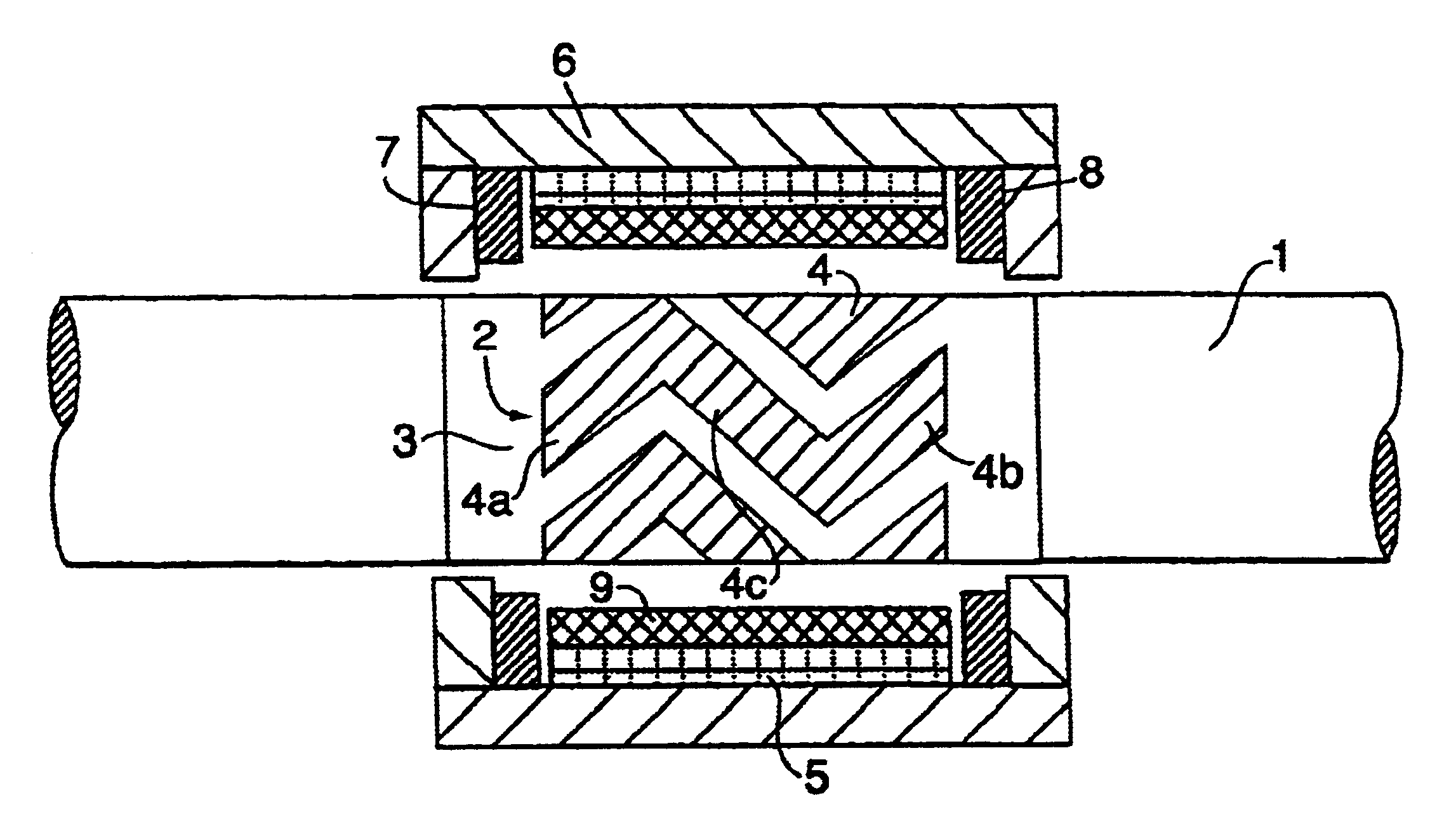Torque sensor
a torque sensor and magnetic field technology, applied in the direction of magnetostrictive devices, measuring devices, instruments, etc., can solve the problems of limited use of this sensor, less attractive for many applications, and restricted use of this sensor
- Summary
- Abstract
- Description
- Claims
- Application Information
AI Technical Summary
Benefits of technology
Problems solved by technology
Method used
Image
Examples
Embodiment Construction
FIG. 1 shows a rotatable shaft 1, which is arranged to transmit a torque in any kind of mechanical transmission. The shaft 1 may here consist of a substantially arbitrary material, which meets the mechanical demands required on the shaft 1 as a transmission element with reference to hardness, strength and geometry. To be able to measure the size and direction of a torque in the shaft 1, a magnetostrictive sensor has been provided in a suitable place along the extension of the shaft 1. In this case, the magnetostrictive sensor comprises a magnetostrictive region 2 provided on the shaft 1, which has an extension on the circumferential surface of the shaft. The magnetostrictive region 2 comprises a first layer 3 of a magnetostrictive material, which has a substantially continuous extension and thickness in said region 2. Advantageously, the first layer 3 comprises nickel but it may also comprise iron, cobalt and other materials which have suitable magnetostrictive properties. A second ...
PUM
| Property | Measurement | Unit |
|---|---|---|
| angle | aaaaa | aaaaa |
| angle | aaaaa | aaaaa |
| angle | aaaaa | aaaaa |
Abstract
Description
Claims
Application Information
 Login to View More
Login to View More - R&D
- Intellectual Property
- Life Sciences
- Materials
- Tech Scout
- Unparalleled Data Quality
- Higher Quality Content
- 60% Fewer Hallucinations
Browse by: Latest US Patents, China's latest patents, Technical Efficacy Thesaurus, Application Domain, Technology Topic, Popular Technical Reports.
© 2025 PatSnap. All rights reserved.Legal|Privacy policy|Modern Slavery Act Transparency Statement|Sitemap|About US| Contact US: help@patsnap.com



